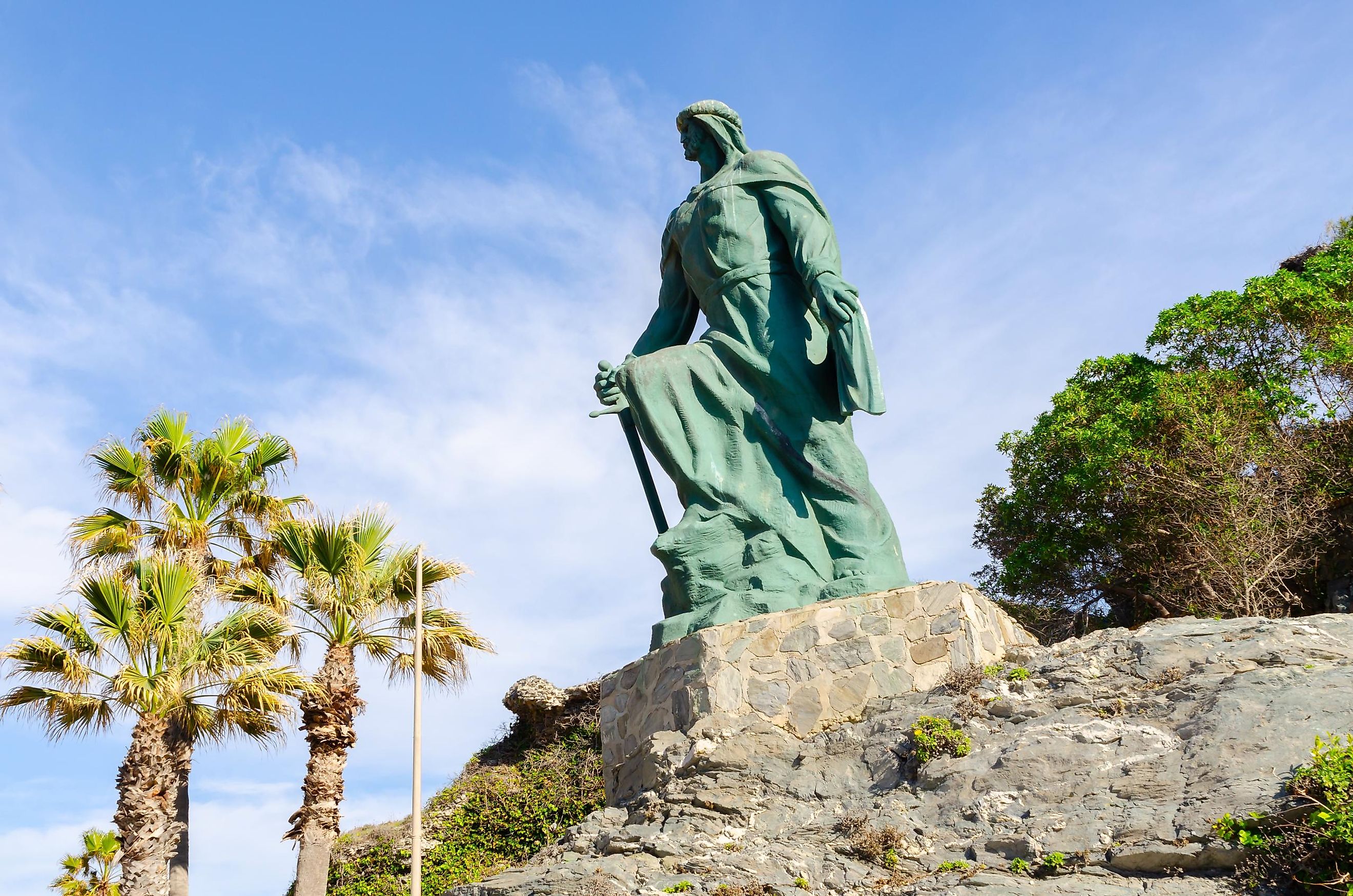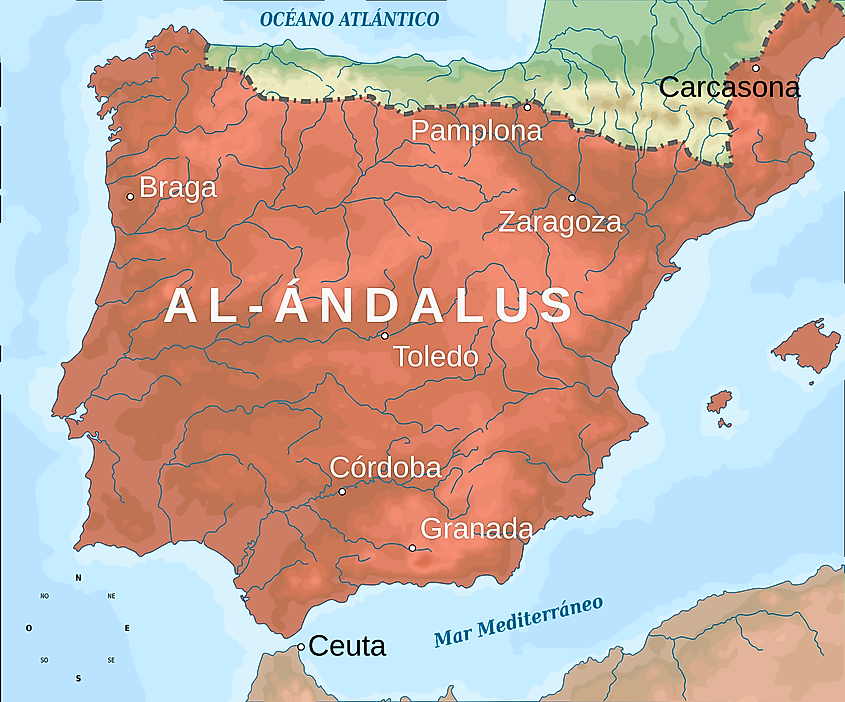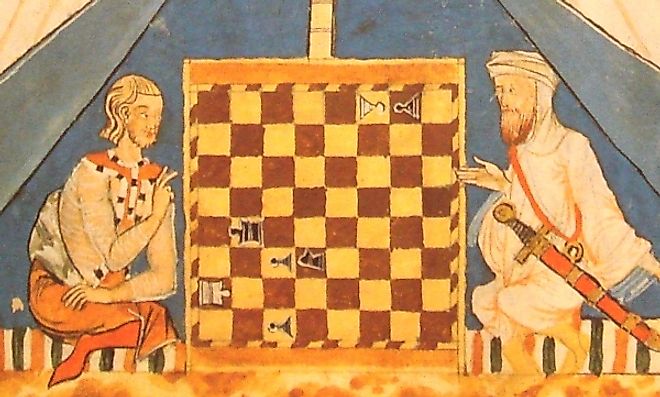
The Umayyad Conquest of Hispania
The Umayyad Caliphate's conquest of Hispania (modern-day Spain and Portugal, also known as Iberia) was a seven-year campaign from 711-718. The invasion had enormous cultural and geopolitical implications. For instance, it was the first interaction between the so-called Muslim world and the West. Thus, it is often understood by many in the West as a moment of existential threat to Christianity and Western civilization. However, the subsequent Islamic rule of Iberia actually displayed a notable tolerance towards other religious groups. These viewpoints and the actual military campaign are necessary to consider when understanding the Umayyad war for Hispania.
The Umayyad Caliphate And Hispania

The Umayyad Caliphate was the second Caliphate to follow the death of the Prophet Mohammad. In contrast to the preceding Rashiduns, the Umayyads operated on a hereditary basis. Based in Damascus and existing from 661-750, the Caliphate made up one of the largest empires of all time, encompassing the Arabian Peninsula, the Levant, Persia, parts of North Africa, the Caucasus, Central Asia, Pakistan, and, of course, Hispania. Due to its size, it was a multiethnic and multireligious empire, including notable Christian, Jewish, Zoroastrian, and Pagan populations. This multicultural background would prove important in the aftermath of the conquest of Iberia.
Even before the Umayyad invasion, Hispania had been conquered and influenced by many different empires and people. The Carthaginians ruled Iberia in the mid-200s BCE. However, after a nearly 200-year campaign, during which the peninsula was under mostly autonomous rule, the Roman Empire finally controlled all of Hispania by 19 BCE. Then, in the 400s AD, as the Western Roman Empire was in decline, the Visigoths (Germanic tribes from the North) invaded Hispania. After 300 years of Germanic rule, the Iberian Peninsula was attacked once again, this time by the Umayyads.
The Conquest

In 710, a small division of 400 Umayyad soldiers was dispatched to what is today known as Gibraltar. However, according to the Arab historian Ibn Abd al-Hakam, the full-on invasion began in 711 when a division of about 1,700 Umayyad soldiers attacked the southern Iberian shores, beating the Visigoth army in the Battle of Guadalete. A second incursion then occurred, consisting of 18 000 mostly Arab troops--contrasting the first division of largely Berber soldiers. This attack resulted in the conquest of the town of Seville, after which the troops worked their way north through Mérida and Talavera de la Reina. Thereafter, they met up with the first group of soldiers and reached the northern region of Galicia together. In 714, other divisions of the Umayyad army began attacking eastern Hispania, taking Catalonia and the Basque regions. By 718, the Umayyad Caliphate had conquered most of Hispania and had even crossed the Pyrenees into France, only to be temporarily halted in Toulouse in 721 and permanently stopped at Tours in 732.
The Aftermath

Following its conquest, Hispania became the westernmost tip of the Umayyad Caliphate. The region, now known as Al-Andalus, transformed into a beacon of interreligious and cultural exchange. This relative tolerance had been demonstrated during the war, with Umayyad leaders preferring treaties with Christians and Jews rather than forceful conversions and executions. Upon controlling Hispania, the Umayyads continued to allow Christians and Jews to practice their faith so long as they paid the Jizya, a yearly tax. This tolerance can likely be attributed to the multiethnic and multireligious nature of the Caliphate.

Indeed, as previously noted, many non-Muslim religious groups were already under Umayyad rule. Moreover, as also previously described, the main invading armies consisted of both North African and Arab troops. Thus, the Umayyads already had ample experience dealing with different people and cultures. However, even when the Umayyad Caliphate fell, the subsequent Cordoba Caliphate maintained this tolerance, continuing the Jizya tax for Jews and Christians. To give an example of the relative flourishing of different religious groups during this period, Jewish philosopher Moses Maimonides rose to prominence and developed some of his most influential ideas while under Cordoba's rule.
Despite how it is often portrayed, the Umayyad conquest of Hispania was not an existential threat to Western civilization. Indeed, Islamic rule afforded notable tolerance towards different religious communities, even allowing some to flourish. Therefore, a more nuanced understanding of this event is needed. In fact, such a perspective may be applicable to the modern day. With xenophobia and anti-immigrant sentiments growing in many Western countries, looking to an instance in which different cultures and beliefs co-existed fairly peacefully may encourage more tolerance.











